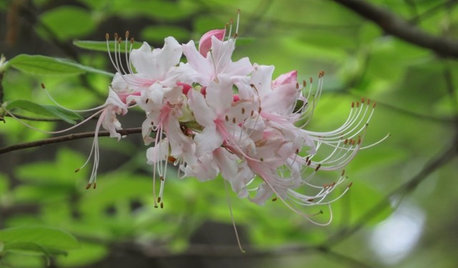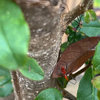Organic replant disease solution?
Michael
9 years ago
Related Stories

GARDENING GUIDESTree Care: Common Tree Diseases and What to Do About Them
Learn to recognize trees that may be affected by diseases or pests so you can quickly take action
Full Story
GARDENING GUIDESGardening Solutions for Heavy Clay Soils
What’s a gardener to do with soil that’s easily compacted and has poor drainage? Find out here
Full Story
ORGANIZINGYour Total Home Organizing and Decluttering Guide
Take it slow or be a speed demon — this room-by-room approach to organizing and storage will get your home in shape no matter how you roll
Full Story
GARDENING GUIDESHow to Switch to an Organic Landscape Plan
Ditch the chemicals for a naturally beautiful lawn and garden, using living fertilizers and other nontoxic treatments
Full Story
INSPIRING GARDENSFrom Concrete Lot to Gracious Organic Garden in Seattle
Plants, pests and even weeds have a place in this landscape, which offers an edible bounty and a feast for the eyes
Full Story
GARDENING GUIDESGreat Design Plant: Rosa Banksiae a Low-Maintenance Beauty
This thornless, disease- and insect-resistant rose brings showers of white or yellow flowers to the spring garden
Full Story
STORAGEBedroom Storage: 12 Ways to Work Your Wardrobe
Instead of letting the mess in your closet overwhelm you, tackle it head on with these smart and simple solutions
Full Story
ORGANIZINGHow Much Stuff Is Enough?
Play the numbers game to streamline your belongings, for a neater home and a less-stressed you
Full Story
DECLUTTERING5 Ways to Jump-Start a Whole-House Decluttering Effort
If the piles of paperwork and jampacked closets have you feeling like a deer in the headlights, take a deep breath and a baby step
Full Story
GARDENING GUIDESGreat Design Plant: Rhododendron Canescens
Have a damp, shady spot in your garden that needs a lift? This Southern U.S. native may be the solution
Full StorySponsored
Columbus Area's Luxury Design Build Firm | 17x Best of Houzz Winner!
More Discussions








lazy_gardens
nc_crn
Related Professionals
West Milford Landscape Architects & Landscape Designers · Erie Landscape Architects & Landscape Designers · Willowick Landscape Architects & Landscape Designers · Concord Landscape Contractors · Berwyn Landscape Contractors · Brownsville Landscape Contractors · Cockeysville Landscape Contractors · Florham Park Landscape Contractors · Saint Paul Landscape Contractors · Tamarac Landscape Contractors · Weslaco Landscape Contractors · Norridge Landscape Contractors · Elkridge Decks, Patios & Outdoor Enclosures · Cary Decks, Patios & Outdoor Enclosures · Jackson Decks, Patios & Outdoor EnclosuresMichaelOriginal Author
maplerbirch
MichaelOriginal Author
maplerbirch
nc_crn
MichaelOriginal Author
lazy_gardens
maplerbirch
MichaelOriginal Author
lazy_gardens
nc_crn
maplerbirch
nc_crn
MichaelOriginal Author
maplerbirch
MichaelOriginal Author